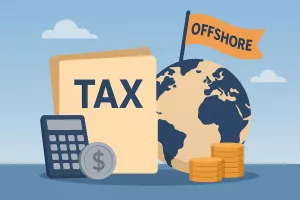When managing finances, borrowing money is often necessary for achieving goals, covering unexpected expenses, or smoothing out cash flow. Two common financial tools that provide access to borrowed funds are credit cards and lines of credit. While both options allow you to borrow money when you need it, they differ in how they function, their cost structures, and their appropriate use cases. Understanding the difference between a credit card and a line of credit can help you choose the right option for your financial situation.
What Is a Credit Card?
A credit card is a revolving credit tool that allows you to make purchases up to a pre-set limit. Credit cards are widely used for day-to-day spending, from groceries to entertainment, as well as for larger purchases. They are typically issued by banks, credit unions, or financial institutions and are linked to a specific account. Credit cards offer convenience, flexibility, and, in many cases, rewards like cashback or points.
How a Credit Card Works
Credit cards work by providing you with a credit limit, which is the maximum amount you can borrow at any given time. When you make purchases, the amount is deducted from your available credit. Here’s a breakdown of how credit cards function:
- Credit Limit: This is the maximum amount you can charge to the card. The limit is determined by the card issuer based on your credit score, income, and other financial factors.
- Purchases and Payments: Each time you use your card, your available credit decreases. You can pay off the balance in full or make a minimum payment each month, and any unpaid balance carries over to the next billing cycle.
- Interest and Fees: If you don’t pay the full balance by the due date, the remaining balance accrues interest. Credit cards often have high-interest rates, especially for those with lower credit scores. Additional fees may include annual fees, late payment fees, and foreign transaction fees.
- Revolving Credit: Credit cards offer revolving credit, meaning your credit limit is restored as you pay down your balance. For example, if your limit is $5,000 and you pay off $1,000 of your balance, you have $1,000 in available credit again.
Common Features of Credit Cards
Credit cards often come with a variety of features and benefits that cater to different financial needs:
- Rewards Programs: Many credit cards offer cashback, points, or miles for every dollar spent, which can be redeemed for travel, merchandise, or statement credits.
- Introductory Offers: Some cards offer 0% APR for an introductory period, which can be useful for making large purchases or transferring balances.
- Fraud Protection: Credit cards typically offer strong fraud protection, with many issuers offering zero liability for unauthorized purchases.
- Grace Periods: Credit cards usually offer a grace period between the purchase date and the due date, allowing you to pay off your balance without incurring interest.
When to Use a Credit Card
Credit cards are ideal for everyday purchases, building credit, and taking advantage of rewards programs. They are also useful for emergencies, as they provide instant access to funds. However, the high-interest rates mean that carrying a balance over time can be costly. Credit cards are best used when you can pay off the balance in full each month to avoid interest charges.
What Is a Line of Credit?
A line of credit is a flexible loan that allows you to borrow money up to a certain limit, similar to a credit card. However, lines of credit are often associated with larger sums of money and more diverse use cases. They are typically offered by banks and credit unions and can be either secured or unsecured. Unlike credit cards, which are primarily used for purchases, lines of credit are designed for cash needs and larger expenses.
How a Line of Credit Works
A line of credit provides you with access to funds that you can draw on as needed. Interest is only charged on the amount you borrow, and you can repay and borrow again as long as you stay within the credit limit. Here’s how a line of credit functions:
- Credit Limit: The lender sets a maximum amount you can borrow, based on your creditworthiness, income, and collateral (if applicable).
- Draw Period: During the draw period, you can borrow as much as you need, up to the credit limit. You’re only charged interest on the funds you actually use.
- Repayment: Payments are usually interest-only during the draw period, with the principal becoming due after the draw period ends. The repayment terms vary based on the type of line of credit.
- Revolving Credit: Like a credit card, a line of credit is revolving, meaning that as you pay down your balance, the available credit is replenished, allowing you to borrow again if needed.
Types of Lines of Credit
There are different types of lines of credit, each serving specific needs:
- Personal Line of Credit: Unsecured and used for various personal expenses, such as home improvements, medical bills, or unexpected costs.
- Home Equity Line of Credit (HELOC): Secured by your home’s equity, a HELOC is typically used for large expenses like renovations or debt consolidation. The interest rates are usually lower because the loan is backed by your home.
- Business Line of Credit: Designed for business owners, this line of credit provides working capital for day-to-day operations, inventory purchases, or managing cash flow.
Interest Rates and Fees
Lines of credit usually have lower interest rates compared to credit cards, especially if they are secured by collateral like your home. However, they may have additional fees, including:
- Annual Maintenance Fees: Some lenders charge an annual fee just for keeping the line of credit open.
- Draw Fees: There may be fees each time you draw funds from the line of credit.
- Inactivity Fees: If you don’t use your line of credit for a certain period, the lender may charge an inactivity fee.
When to Use a Line of Credit
A line of credit is best suited for larger, ongoing expenses or projects that require flexibility. For example, home renovations, medical expenses, or managing irregular cash flow in a business are ideal scenarios for using a line of credit. It’s also useful as a backup for emergencies, similar to an emergency fund, because you only pay interest when you actually draw on the funds. However, because repayment terms can vary and often include principal payments after the draw period, careful financial planning is required.
Key Differences Between a Credit Card and a Line of Credit
While both credit cards and lines of credit are revolving credit tools, they differ significantly in their structure, purpose, and usage:
Purpose:
- Credit Card: Primarily for everyday purchases and short-term borrowing.
- Line of Credit: Best for larger expenses, irregular cash flow needs, or ongoing projects.
Interest Rates:
- Credit Card: Typically higher interest rates, especially for those with lower credit scores.
- Line of Credit: Generally lower interest rates, especially if secured by collateral like a home.
Repayment Terms:
- Credit Card: Monthly payments with a minimum due, but carrying a balance incurs high interest.
- Line of Credit: Payments may be interest-only during the draw period, with principal payments required after.
Access to Funds:
- Credit Card: Best for direct purchases, whether online or in stores. Cash advances are possible but usually come with high fees and interest rates.
- Line of Credit: Funds are typically accessed through transfers to a checking account, making it suitable for expenses where direct credit card payment isn’t an option.
Fees:
- Credit Card: Potential fees include annual fees, late fees, and foreign transaction fees.
- Line of Credit: May include annual fees, draw fees, and inactivity fees.
Collateral:
- Credit Card: Unsecured, meaning no collateral is required.
- Line of Credit: Can be secured or unsecured. Secured lines of credit, like HELOCs, offer lower interest rates.
Credit Impact:
- Credit Card: Regular use and timely payments can build credit, but high balances can negatively impact your credit utilization ratio.
- Line of Credit: Usage is reported to credit bureaus, but since they’re often used for larger amounts, they require responsible management to avoid debt issues.
Conclusion
Choosing between a credit card and a line of credit depends on your financial needs, spending habits, and the purpose of the borrowed funds. Credit cards are ideal for everyday purchases, rewards, and short-term borrowing, while lines of credit offer flexibility for larger, ongoing expenses or unpredictable cash flow needs. Understanding the key differences, including interest rates, repayment terms, and fees, will help you make an informed decision that aligns with your financial goals and keeps your debt manageable. Whether you opt for a credit card or a line of credit, responsible use and timely payments are crucial for maintaining your financial health and building a strong credit profile.




